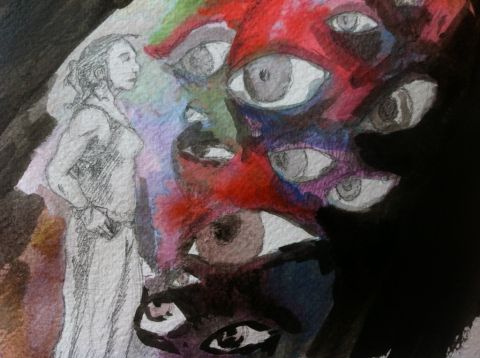The second instalment of Tamarin Norwood’s initial response to Paul Scott’s sign language artwork ‘Three Queens’:
2 – After watching for the first time…
—
Two things came up during this first encounter with the poem.
I was anxious. I hadn’t expected that. At first I thought I was just concentrating too hard trying to understand it, but halfway through I realized I was worried because I was trying to memorize it. Why on earth was I trying to memorize it? Did it have something to do with my inability to understand every word? I didn’t want to interrupt the video to note down my thoughts so perhaps that was it: I was trying to memorize my responses and save them all up until the poem was done. Yes, it was a bit anxious.
Perhaps if I really hadn’t understood a word I might have been more able to let it all wash over me like linguistic flux. But (I think) I understood more than I’d expected. I enjoyed watching the family tree being played out at speed (so these are three related queens?) the descriptions of gowns and crowns, the inscrutable requirement that (who? courtiers?) should hastily but thoughtfully note everything down on little notepads. At one point sign language was being noted down (I think). I’m looking forward to reading the description so I know what on earth was going on there.
You see I could pick out bits of detail, but certainly not the trajectory of the story or the shape of the poem. And I wonder how much I would have been able to pick out if the title weren’t already provided for me, written out in English at the opening of the video?
The other thing that struck me in this first meeting was Paul’s brilliant comic timing, which seems to leap from his fingertips on cue then vanish without a trace. I couldn’t tell whether the poem contained a tight tricky twist or a wry quip at the end, or any kind a structural humour in its shape, but the whole piece felt peppered through with comedy: the smearing on of unwieldy clothes, the earnest characterization of those mysterious scribbling courtiers, the speed with which the queens grew and reproduced and grew and reproduced, and the shifting field and scale of vision we had to assume to accommodate this zooming in and out between individuals and branches of the family tree.
Like the Pina Bausch dance, it was engrossing to watch. But unlike the dance it won’t stop there. The tantalizing form and bits of meaning I’ve managed to scrape together make me want to find out more.
